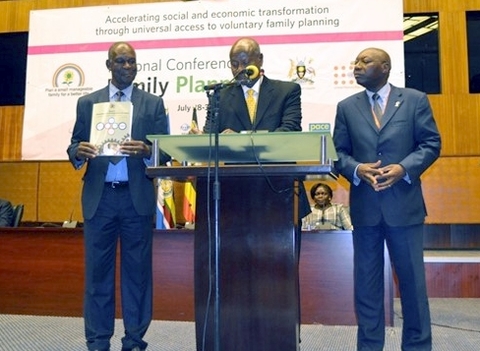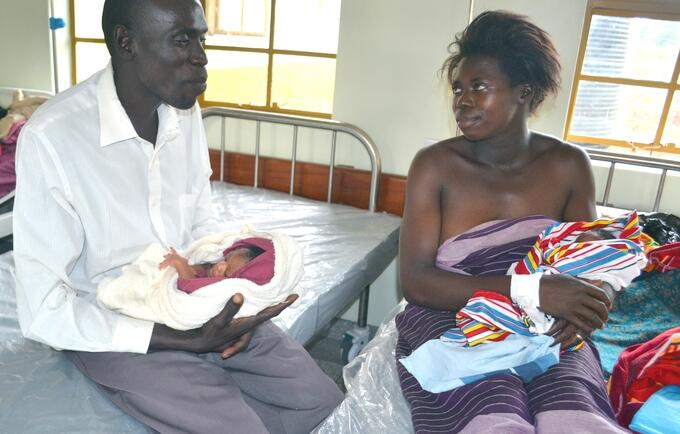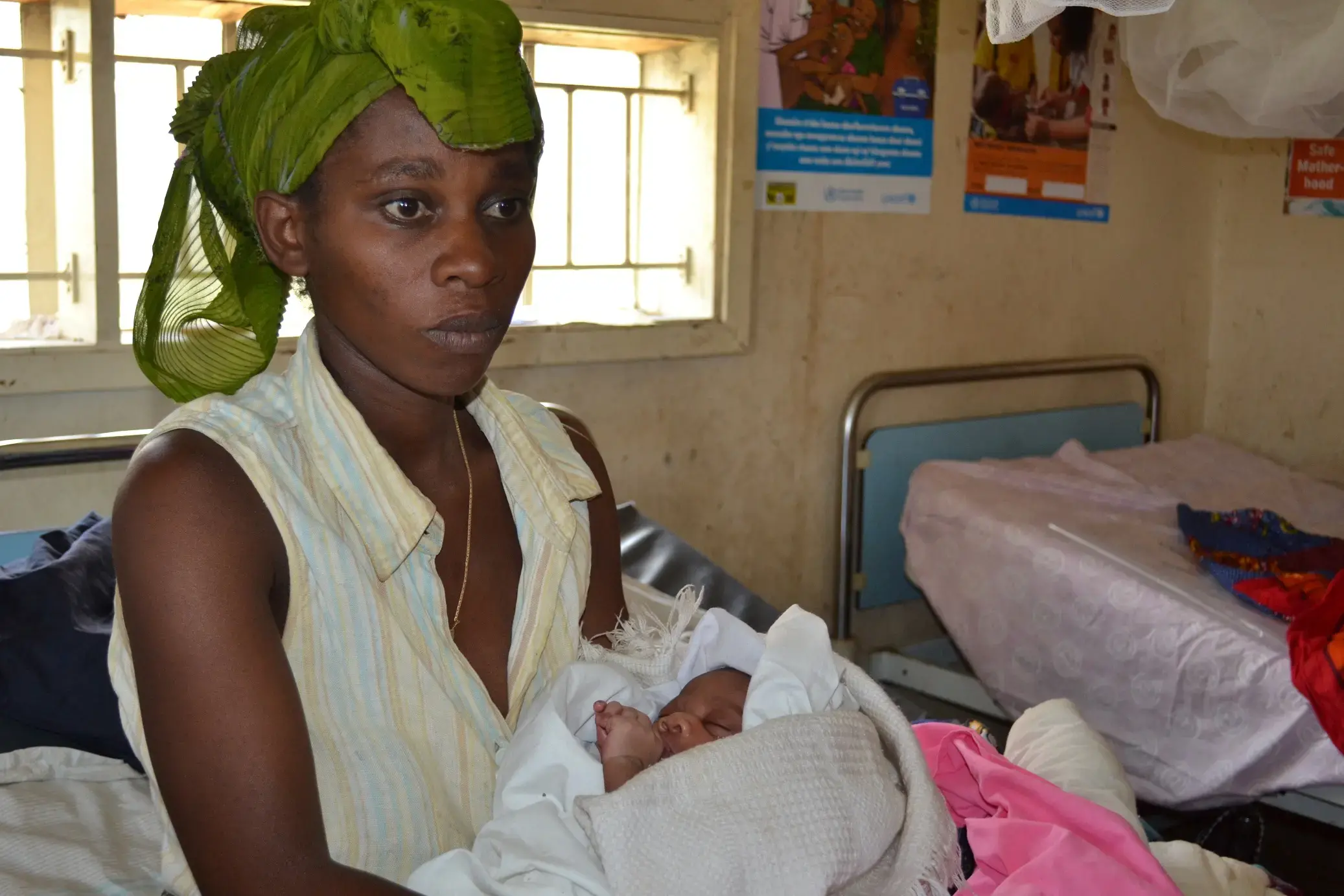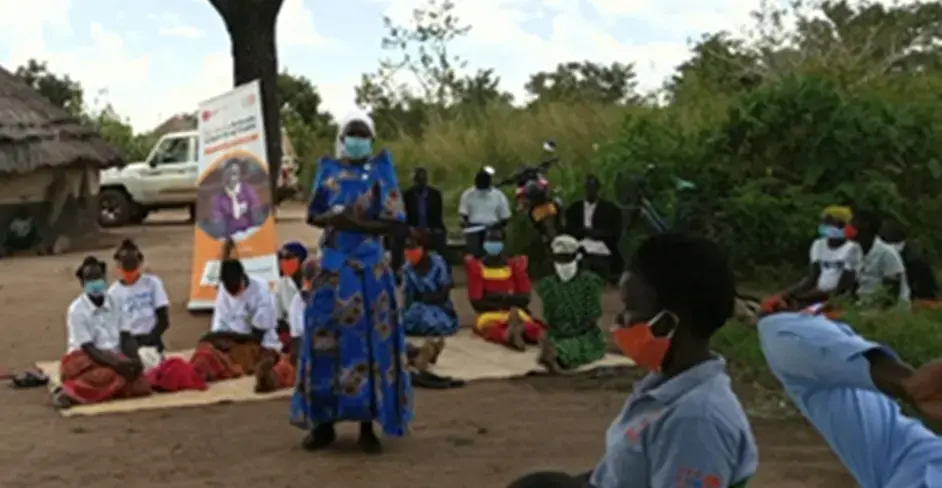APAC DISTRICT, Uganda – Kate Opio, 33, can barely contain her joy as she cuddles her newborn baby, while another sleeps peacefully on the next bed next to her. Ms. Opio has just given birth to twins in the maternity ward at Inomo HC III in Apac district. The midwife, Margret Nabukenya, tells how she helped Ms. Opio through a life-threating delivery. “Ms. Opio experienced cervical dystocia, a condition where the cervix stops enlarging, making it difficult for the baby to come out. We had to make a quick decision to get her to theatre for a Caesarian section, to save the life of mother and baby,” she said. Ms. Opio is grateful for the midwife’s quick action. Beside her, her husband, Samuel, also has a big smile on his face, typical of a proud father welcoming his little babies into the world. “We thank God for the midwife,” he says. “I want her to help other women the way she has helped my wife.”
I want the midwife to help other women the way she has helped my wife.”
The couple already has four children, with the new arrivals bringing the total to six. Asked if they would like to more children, Mr. Opio shares his sentiments: “After we had four children, my wife and I thought that was enough,” he says. “We were using a natural family planning method. We were not prepared to have more babies, but it has happened.” As a result, the couple requested a tubal ligation immediately after their twins were delivered, to prevent further incidences of unplanned pregnancy. Mr. Opio’s biggest worry now is how he will provide quality education for all six children.
Journey to advance family planning
It has taken more than 20 years for Ugandans to realize that smaller families are better to manage. Efforts to ensure modern family planning methods are more accessible have resulted in a decrease in fertility from an average of 6.2 children per woman in 2002 to 5.4 in 2016 (Uganda Demographic and Health Survey, 2016). This means that on average, a Ugandan woman today has one child less than in 2002. This journey of transition began in the mid-1990s. Encouraged by the vigour with which the Government of Uganda confronted the HIV and Aids epidemic, health experts began advising that Uganda’s uncontrolled fertility, then around 7 children per woman, was closely linked to the people’s poor health.
But their enthusiasm did not get a matching response from the country’s leadership. Despite the fact that the government took health issues seriously, this aspect was brushed aside for lack of evidence – an attitude that persisted in official circles for more than two decades. Added to this was the influence of the country’s largest religious community, the Catholic Church, which strongly opposes any forms of family planning methods that are not ‘natural’. Moreover, in the 1990s the government was championing the revival of the East African community – the regional economic integration bloc originally including Kenya, Tanzania and Uganda, and which was expanded to include Rwanda and Burundi and, more recently, South Sudan. President Yoweri Museveni’s message, in that economic climate, was very clear – Uganda needed the numbers for an expanded market to boost domestic demand and stimulate industrialization. Clearly this was not the most conducive environment to seek government support for family planning programmes. Thus, advocacy to reduce Uganda’s fertility rate was largely left to a few non-governmental organizations and partner agencies, led by UNFPA.
We will ensure an enabling policy environment to allow women to exercise their family planning choices, we will increase our financial investment in family planning and will strengthen service delivery.”
Turning point for family planning in Uganda
What finally won over President Museveni and led to his change in attitude cascading downwards, was the opportunity for Uganda to seize the Demographic Dividend, supported by UNFPA and backed with data from the Uganda Bureau of Statistics (UBOS). Keen to develop Uganda into a middle-income state, the country’s leadership was now paying attention to the concept of a potential demographic dividend. By 2010, President Museveni was a convert. Due to his standing on the African continent, his commitment to pursuing pro- family planning policies at the 2012 London Summit was music to the ears of population and family planning partners. At the summit on July 11 he said: “My government is totally committed to improving the health of our women and adolescents; in this regard, (we) will ensure an enabling policy environment to allow women to exercise their family planning choices, we will increase our financial investment in family planning and will strengthen service delivery.”
He developed a road map to ensure Uganda can reach its goal of universal access to family planning and, in turn, achieve its National Development Plan goal of reducing maternal and child mortality and attaining Middle Income Country status. A major landmark came in July 2013. Parliament passed a bill to create the National Population Council, an autonomous body to oversee the country’s population, reproductive health and family planning policies. In the same year, President Museveni launched the national Vision 2040. During the drawing up of the second National Development Plan NDPII, the quest for a demographic dividend became key and emphasis was put on human resources. The government adopted actions to harness a Demographic Dividend for Uganda, taking advantage of the large population of young people as a key strategy for achieving Vision 2040.

UNFPA support to advance family planning
UNFPA supports the Government of Uganda in generating data for evidence-based advocacy and policy formulation to advance the family planning agenda. Through the National Population Council, the Fund supports a national steering committee that is designing a roadmap to harness the demographic dividend. With support from UNFPA, the Ministry of Health developed the National Costed Implementation Plan for Family Planning (CIP 2014-2020) as well as an Investment Case for Reproductive, Maternal, Newborn, Child and Adolescent Health (RMNCAH 2016-2020) - including family planning – with a total value of $211 million.
“With this level of determination, Uganda can meet the ambitious target of a 50 per cent contraceptive prevalence rate by 2020.”
UNFPA investments contribute to improvements
Since 2012, UNFPA has invested $32 million in family planning commodities, contributing to Uganda’s national supply plan. In 2016, UNFPA invested more than $5 million in family planning programmes in the country.“This is remarkable progress for Uganda,” said Alain Sibenaler, UNFPA Representative. “Over the past five years, contraceptive use among married women in Uganda has increased by almost 10 per cent, while unmet need has dropped by 25 per cent. “With this level of determination, Uganda can meet the ambitious target of a 50 per cent contraceptive prevalence rate by 2020.” Currently, the contraceptive prevalence rate among married women is 35 per cent, compared to 26 per cent in 2011. It is also hoped that the unmet need for family planning, currently at 28 per cent, will reduce to 10 per cent in 2020.
By Joachim Buwembo and Prossy Jonker Nakanjako





